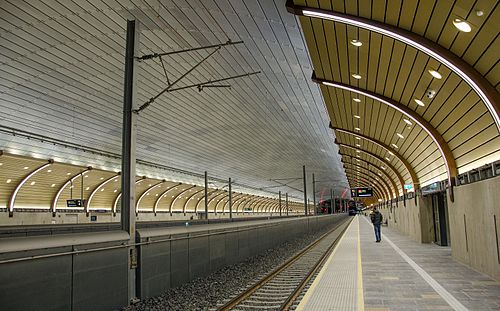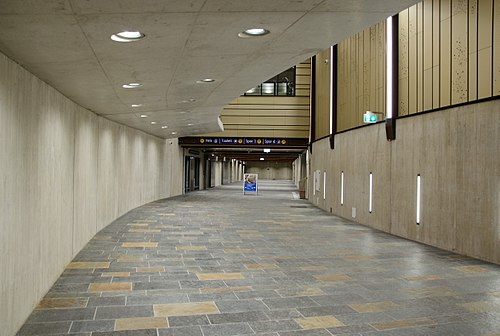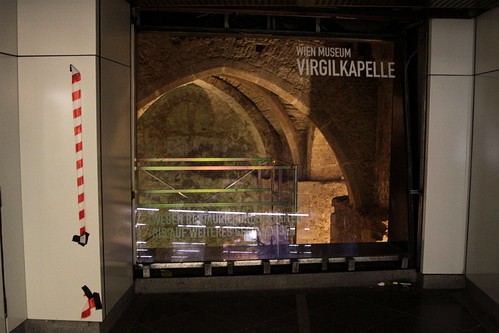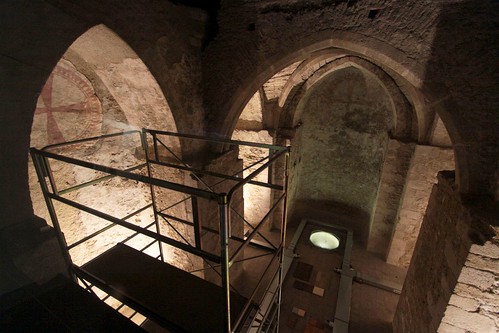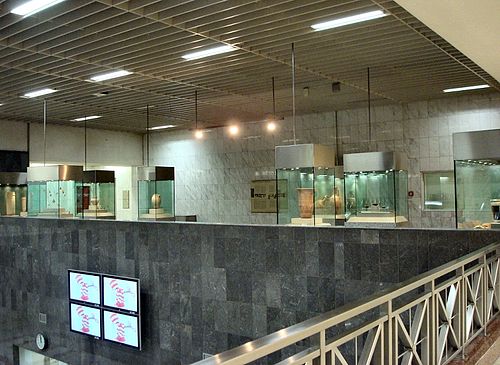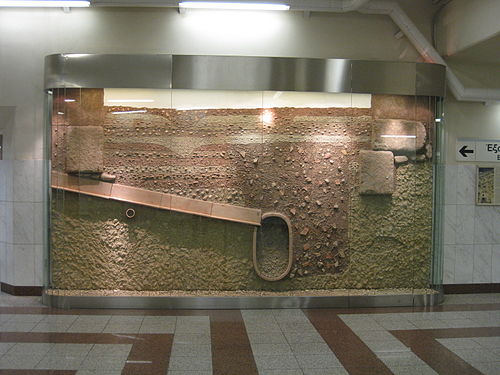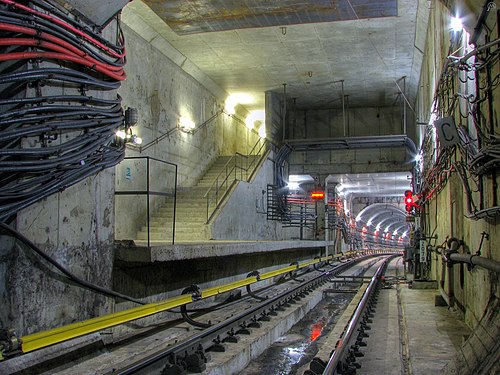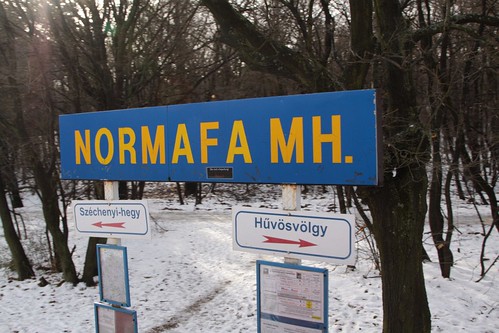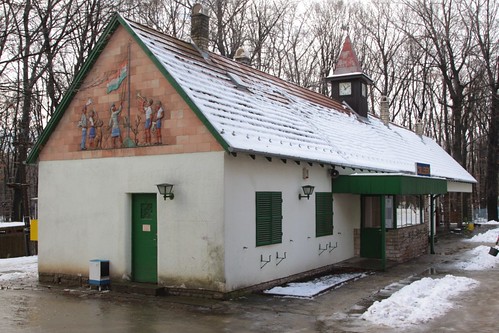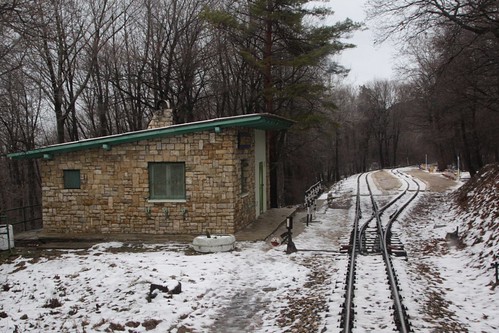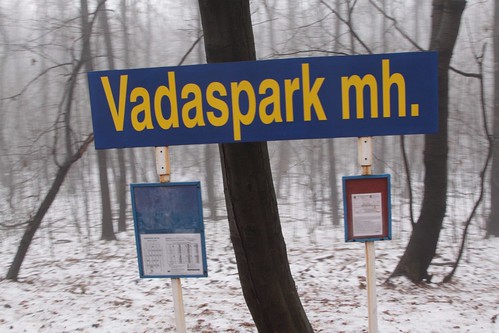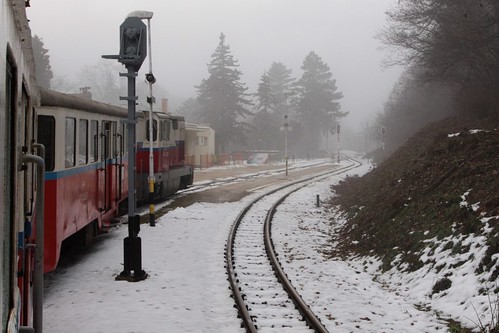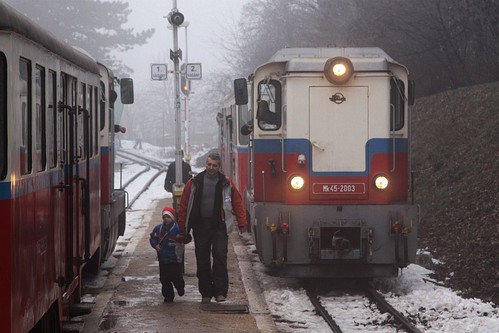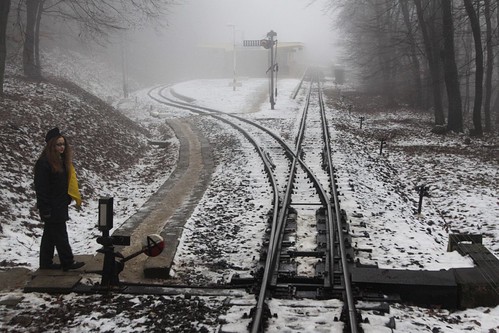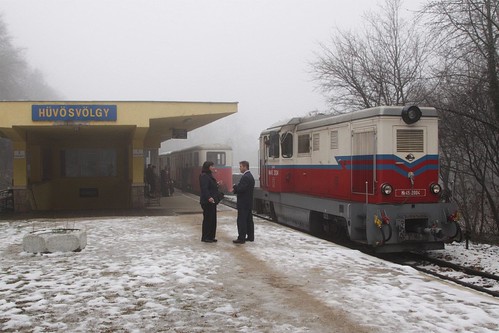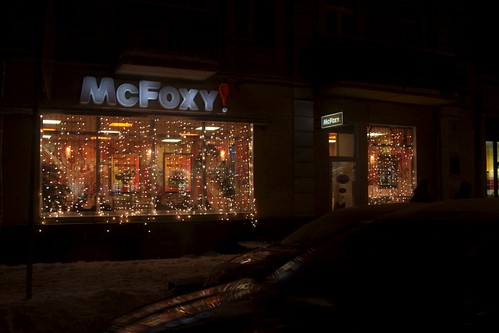One of my hobbies is model railways, with 1:160 N scale being my chosen scale. Unfortunately the number of people who model the railways of Russia is difficult, let alone any N scale model of Russian trains, but there are a number of models out there for someone keen to do a lot of the work themselves.
Ready to run
These models are ‘ready to run’ out of the box, and don’t require any work on the part of the modeller.
M62 diesel locomotive in RZD livery
Manufacturer: Fleischmann

RZD liveried sleeping carriages
Manufacturer: LS Models
As used on the Moskau-Berlin and Moskau-Paris trains (sets 78037 and 78038)

RZD “EC Venezia” carriages
Manufacturer: Trix #18252

SZD liveried ЧС4 (CHS4) electric locomotive, three liveries
Manufacturer: Piko East Germany (part number 5/4121)

SZD sleeping carriages, three liveries
Manufacturer: Piko East Germany (part number 5/4145)

Trains to repaint
There models are ‘ready to run’ out of the box but are not available in Russian liveries, so need to be repainted by the modeller.
Sapsan high speed train
Manufacturer: Minitrix or Arnold
The Siemens Velaro RUS can be represented using a repainted DB ICE 3.

Display models to convert
There models are static items for display on a shelf, but can be modified into operating models with some effort.
ВЛ80 (VL80) two-unit AC electric locomotive
Manufacturer: Del Prado
Can be motorised using a Tomytec TM-04 or Atlas GP-9 mechanism.

СУ 2-6-2 steam locomotive (aka Su 1-3-1)
Manufacturer: Del Prado
I’m not sure how one would motorise one of these – you’d need to find a matching motorised steam locomotive for a donor mechanism. The easier option would be to ‘plinth’ it outside a railway station, just like the real railways did after steam locomotives were retired.

Sapsan
Manufacturer: Del Prado
The Siemens Velaro RUS can be represented using a repainted DB ICE3 power car. Unfortunately only cab cars are available, so you’re on your own for the trailer cars
Kits
There models are a kit of parts to be assembled and painted by the modeller into a completed model. The level of effort required varies depending on the kit.
Soyuz rocket & transport train
Manufacturer: Good Smile
A 1:150 scale plastic kit of the Soyuz rocket and rail transport wagon as used at Baikonur Cosmodrome. Note no ТЭМ2УМ (TEM2UM) diesel locomotive or support wagons are included.

ТЭМ2 (TEM2) diesel locomotive
Manufacturer: UMF – Unique Model Factory
A brass and resin kit of the Polskie Koleje Państwowe class SM48 diesel locomotive, which was the Polish export version of the ТЭМ2.

3D printed models
Shapeways is an 3D print on demand service, with an online marketplace selling 3D prints of designs uploaded by modellers. The resulting prints need to be cleaned up, assembled, detailed and painted to form complete models.
ЧС7 (ChS7) two-unit eight-axle DC electric passenger locomotive
Shapeways store: Tsarew & Villano 3D Shop

ВЛ8 (VL8) two-unit eight-axle DC electric locomotive
Shapeways store: Tsarew & Villano 3D Shop
2ТЭ25К (2TE25K) two-unit twelve-axle diesel-electric locomotive
Shapeways store: Tsarew & Villano 3D Shop
2ТЭ116 (2TE116) two-unit twelve-axle diesel-electric locomotive
Shapeways store: 3D Locomotives & Trucks
ТЭП70БС (TEP70BS) six-axle diesel-electric locomotive
Shapeways store: Tsarew & Villano 3D Shop
ЧМЭ3 (ChME3) six-axle diesel-electric locomotive
Shapeways store: Tsarew & Villano 3D Shop
ТГМ3 (TGM3) four-axle diesel-hydraulic locomotive
Shapeways store: Tsarew & Villano 3D Shop
ТГМ4 (TGM4) four-axle diesel-hydraulic locomotive
Shapeways store: Tsarew & Villano 3D Shop
ЭР1 (ER1) electric multiple unit (‘Elektrichka’)
Shapeways store: Tsarew & Villano 3D Shop (Cab car and trailer)

ЭР2Т (ER2T) electric multiple unit (‘Elektrichka’)
Shapeways store: Tsarew & Villano 3D Shop (Cab car and trailer)
Metrovagonmash 81-717/81-714 metro train
Shapeways store: fineTrains (cab car and trailer)

E type metro carriages
Shapeways store: fineTrains (cab car and trailer)
Sleeping carriage
Shapeways store: Mamoru Hatano

Dining car
Shapeways store: Mamoru Hatano
Paid 3D models to print
A number of websites allow users to upload 3D models for others to print at home on their own 3D printers. These models have been drawn at other scales, so need to be scaled down to N scale before being 3D printed.

As well as tweaking the designs so they can be successfully 3D printed on your own 3D printer, the resulting prints need to be cleaned up, assembled, detailed and painted to form complete models.
ТЭМ2УМ (TEM2UM) six-axle diesel-electric locomotive in 1:87 HO scale
Turbosquid store: alextim1
ТЭМ18 (TEM18) six-axle diesel-electric locomotive in 1:87 HO scale
Turbosquid store: alextim1
2ТЭ116 (2TE116) two unit six-axle diesel-electric locomotive in 1:87 HO scale
Turbosquid store: alextim1
2ТЭ116U (2TE116U) two unit six-axle diesel-electric locomotive in 1:87 HO scale
Turbosquid store: alextim1
ТЭМ7 (TEM7) eight-axle diesel-electric locomotive in 1:87 HO scale
Turbosquid store: alextim1
ВЛ10К (VL10K) two unit four-axle DC electric locomotive in 1:87 HO scale
Turbosquid store: alextim1
TGM6A / ТГМ6А four-axle diesel-electric locomotive in 1:87 HO scale
Turbosquid store: alextim1
ТЭМ7 (TEM7) eight-axle diesel-electric locomotive in 1:87 HO scale
Cults 3D store: PolarFox
ТЭМ2 (TEM2) six-axle diesel-electric locomotive in 1:87 HO scale
Cults 3D store: PolarFox
ЧС7 (ChS7) two-unit eight-axle DC electric passenger locomotive in 1:87 HO scale
Cults 3D store: PolarFox
ТЭП70 (TEP70) six-axle diesel-electric locomotive in 1:87 HO scale
Cults 3D store: PolarFox
Metrovagonmash 81-717/81-714 metro train in 1:87 HO scale
Cults 3D store: PolarFox
ЭР1 (ER1) electric multiple unit (‘Elektrichka’) in 1:87 HO scale
Cults 3D store: zhelneen
Model 61-4465 double deck passenger carriage in 1:87 HO scale
Cults 3D store: PolarFox
Model 11-066 boxcar in 1:87 HO scale
Cults 3D store: PolarFox
Free 3D models to print
As well as the paid 3D models found above, some generous users have uploaded their 3D designs for free download by anyone.

ЧС4 (CHS4) electric locomotive in unknown scale
Thingiverse user: Tramrunner
2ТЭ10М (2TE10M) diesel-electric locomotive in 1:100 and 1:87 scales
Cults 3D store: AIM4
3ТЭ10М (3TE10M) diesel locomotive in 1:87 HO scale
Thingiverse user: AIM4
ВЛ10 (VL10) two-unit electric locomotive in 1:87 HO scale
Thingiverse user: tweaker123
ЧМЭ2 (ChME2) four-axle diesel-electric locomotive in 1:87 HO scale
Thingiverse user: zhelneen
Metrovagonmash 81-717/81-714 metro train in 1:87 HO scale
Thingiverse user: zhelneen
KTM-5M3 (71-605) tram in 1:87 HO scale
Thingiverse user: zhelneen
‘Platzkart’ sleeping carriage in 1:87 HO scale
Thingiverse user: PolarFox
Model 48-051 ‘PV-40’ narrow gauge passenger carriage in 1:87 HO scale
Thingiverse user: zhelneen
Model 12-1505 gondola wagon in 1:200 scale
Thingiverse user: AIM4
Soviet Union 50-ton tank car in 1:200 and 1:87 scale
Thingiverse user: AIM4
Model 15-1552 tank car for caprolactam in 1:200 scale
Thingiverse user: AIM4
73 tonne tank car in 1:87 HO scale
Thingiverse user: PolarFox
Model 11-259 boxcar for paper in 1:200 scale
Thingiverse user: AIM4
Model 11-270 boxcar in 1:87 HO scale
Thingiverse user: AIM4
Model 11-270 boxcar in 1:200 scale
Thingiverse user: AIM4
Model 13-401 flatcar in 1:200 scale
Thingiverse user: AIM4
Model 12-1592 gondola wagon in 1:87 HO scale
Thingiverse user: PolarFox
And some 3D models that probably won’t print
Some 3D models were never designed to be 3D printed – they’re scale drawings with lots of detail, and walls too thin to be realised as scale model.
Moscow Metro type 81-717.6/714.6 train
3D Warehouse user: Victor P
Moscow Metro type 81-760/761 train
3D Warehouse user: Victor P
So what have I modelled so far?
Unfortunately my fleet Russian Railways model trains is still in the works – I’ve got two Del Prado VL80 static models awaiting conversion to motorised models, and a Soyuz rocket & transport train still unassembled in the box.
Future models I’d like to to build include:
- ТЭМ2 diesel locomotive to haul the Soyuz train;
- some gondolas, tank wagons and boxcars to make up a Russian freight train;
- tank car and a passenger carriage for a RZD fire-fighting train;
- a short ЭР1 electric multiple unit consist; and
- a few sleeping cars and a dining car to make up a passenger train.
One day. 🙂
Further reading
Other than the N scale models I’ve directly linked to above, here are a few more useful resources for N scale modellers interested in the railways of Russia.
And for anyone interested in HO scale – a whole lot more links:


